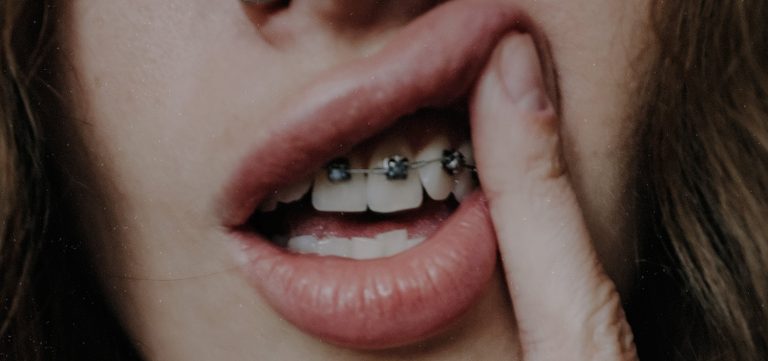“The importance of retainers after braces: a complete overview” is a collaborative post.
Orthodontic therapy, such as braces, requires substantial time and effort to obtain a straight and correctly aligned smile. The adventure, however, only finishes after the braces are removed. Retainers are essential for sustaining orthodontic treatment outcomes and ensuring long-term dental health.
Understanding the importance of proper dental care and keeping to correct retainer wear rules is critical for attaining long-term outcomes and protecting your orthodontic investment. So let’s look at retainers and see why they’re important for post-brace maintenance.
Different types of retainers
There are numerous types of retainers, each with its benefits – individual preference. The following are the two main sorts of retainers:
Removable retainers
Removable retainers keep teeth in their new positions in orthodontics after removing braces. They are custom-built and often constructed of acrylic or clear plastic to fit over the teeth. They aid in maintaining the teeth’s new position. Removable retainers come in a variety of forms, each with its own set of pros and downsides.
- Hawley Retainers. Hawley retainers have a base made of plastic or acrylic that rests on the roof of the mouth or in the back of the lower teeth to keep them in place. The front teeth are held in place with a wire that wraps around the teeth.
- Essix Retainers. Clear retainers, or Essix retainers, are constructed of clear plastic and are custom-fit to the wearer’s teeth. They are more subtle than Hawley retainers but may need to be more durable.
- Clear Aligner-style Retainers. Removable retainers that look like transparent aligners are available. These inconspicuous retainers are produced to order using the same method as transparent aligners.
Fixed retainers
Fixed retainers, also known as bonded retainers, are affixed to the teeth permanently and cannot be removed by the patient. They are formed of a thin wire connected to the teeth’ rear surfaces. Fixed retainers provide ongoing retention without reliance on patient cooperation. Fixed retainers are classified into two types:
- Lingual Retainers. Lingual retainers are affixed to the teeth’ lingual (tongue-side) surfaces. Because the wire is buried beneath the teeth, they are not visible when smiling or talking. Lingual retainers give stability over time and are not apparent to others.
- Bonded Retainers. Bonded retainers are made of a wire glued to the teeth’ insides with dental adhesive. The wire is typically placed on the inner edges of the front teeth, specifically supporting the front teeth.
For a deeper understanding of retainers and their crucial role in orthodontic care, consider reaching out to Kumra Orthodontics, where expert guidance is readily available. As a leading orthodontist in Washington DC, they provide comprehensive consultations and personalised advice, ensuring you have all the information needed to make informed decisions about your orthodontic health.
Different functions of retainers
Retainers are crucial to keeping the results of orthodontic work in place. Knowing their significance in post-brace care will increase as you gain familiarity with their roles.
Keeping the new tooth alignment
When braces are removed, the teeth shift back to their previous locations. Retainers keep the teeth in their right alignment, avoiding relapse and ensuring that the intended result of orthodontic treatment is maintained.
Relapse avoidance
The shifting of teeth back to their pretreatment locations is called relapse. Wearing retainers as directed by your orthodontist may assist with preventing relapse by stabilising the teeth. Furthermore, consistent retainer use ensures the long-term success of orthodontic treatment, helping to maintain the alignment and aesthetic improvements achieved.
Increasing jaw growth and development
Retainers can help guide correct jaw growth and development, especially during adolescence. They contribute to the symmetry of the upper and lower jaws and promote tooth alignment inside the dental arches.
Improved bite occlusion and stability
Retainers help stabilise the bite by ensuring the upper and lower teeth fit together appropriately. They aid in keeping the upper and lower jaws in their proper positions, which reduces the likelihood of problems like tooth wear and fractures by spreading biting evenly.
Promoting permanent dental health
Teeth that are aligned properly look better and are easier to care for. Maintaining the teeth in their ideal locations after orthodontic treatment can help protect against cavities and gum disease over time.
How to take care of your retainers
To keep them functional, clean, and in good shape, retainers require regular maintenance and attention. Here are a few pointers on how to keep your retainers in good shape:
Regular cleaning
Cleaning your retainers will help eliminate plaque, bacteria, and odour-causing materials. Brush every surface of the retainer lightly with a soft toothbrush and mild soap or non-abrasive toothpaste. Hot water might cause the retainer to deform. After that, carefully rinse them.
Soaking methods
To keep your retainers fresh and clean, soak them now and again. Soaking treatments include retainer cleaners, denture cleansers, and a solution of equal parts water and vinegar. Follow the product’s directions or contact your orthodontist for appropriate soaking solutions.
Watch what you eat and drink
It would help to remove your retainers before consuming anything but water. It’s possible for bacteria to thrive and for bad breath to result if food gets stuck in the retainer. It’s also important to avoid staining the retainer with hot liquids or sugary things.
Final thoughts on the importance of retainers after braces
The importance of retainers after braces cannot be emphasised enough. It’s clear that retainers are not just an accessory to orthodontic treatment, but a crucial component of maintaining your new smile. They play an indispensable role in preventing the relapse of teeth, ensuring the time, effort, and investment in braces yield lasting results. Regular and proper use of retainers as directed by your orthodontist is key to preserving the alignment, function, and aesthetics of your teeth.
Remember, the journey to a perfect smile doesn’t end when the braces come off; it continues with diligent retainer wear. Embrace this final, vital step in your orthodontic treatment with the same commitment you showed during your time with braces, and enjoy the benefits of a beautifully aligned smile for years to come.






